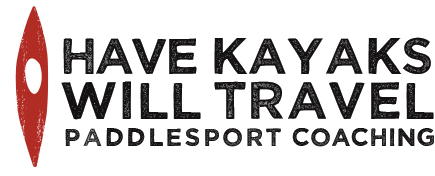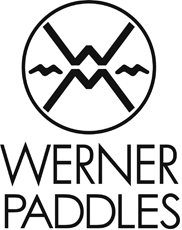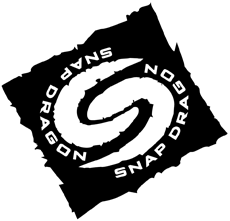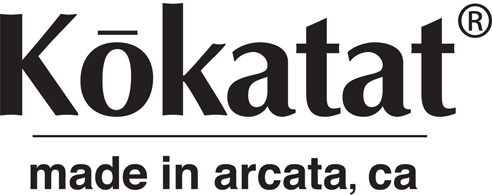Alec tests the new Outex system Up until now, most of the photos we took on the water in dynamic conditions were shot with small waterproof cameras like the Nikon coolpix aw110. It’s a very good camera, but it simply doesn’t provide the features and photo quality of the the DSLRs we use on land (and, occasionally, on the water in calmer conditions). Early this summer we learned about a new product that allows us to use our DSLR on the water without worrying about it or the lenses getting damp. The Outex system is modular, making additions or replacements easy. The Outex system is comprised of a soft latex camera cover, optical glass lens, and a viewfinder or LCD screen lens. The camera cover is sized to fit specific cameras and a range of lenses. You then choose an Outex optical lens that fits the diameter of your lens and screws into the filter threads. The latex cover fits over this and is sandwiched by a washer and threaded ring that fit over the optical lens. Putting on the washer that seals the cover around the lens. At the back of the camera, you can choose a simple viewfinder lens or the larger lens that allows you to see the viewfinder and LCD screen. We choose the later to enable us to shoot video as well as review photos on the spot. Either way, this cover slips onto your existing eyepiece and seals in the same manner as the front cover. The LCD cover allows a good view of camera functions. The final step of assembly is to install a strap to hold onto the camera. Outex offers a neck strap and a wrist strap. We choose the wrist strap because it’s impractical to paddle with a full-size DSLR hanging over your PFD. Fully assemble, with an 18-200 mm. zoom lens. That’s it! The brilliance of this system is that it isn’t bulky, heavy or expensive like a traditional hard housing. You can operate camera controls easily through the flexible latex (though you can’t see them, so you will have to do so by memory). So how does it work? The first we took. We have to admit that even though Outex rates this system to 30 feet, we were nervous at first. In fact, it has performed flawlessly. Here is what we have learned using this system so far: Auto focus works most of the time with the cover on (though it sometimes has a hard time in lower light without the auto focus light). Because of the depth of the lens ring, there is some vignetting when using wide angle lenses. On our Nikon D90, the big LCD lens on...
Photo Friday: The pleasures of the shoulder season
Video Review: Sea Kayak with Gordon Brown, Volume 3
If you’re jealous of the paddling opportunities and access in Scotland, Sea Kayak with Gordon Brown, volume 3 will only exacerbate that emotion. This two-and-a-half-hour DVD begins with “Handling Emergency Situations,” which involves staged rescues by HM Coastguard helicopter and Royal National Lifeboat Institution boats. Why can’t we do that? The scenarios aren’t extreme; they’re quite realistic examples of situations that start out small and grow to be life threatening, such as losing a paddle. They also aren’t entirely simulated; Gordon and friends actually do get cold and suffer bruising from parachute flares. Best of all, they answer questions about the effectiveness of various types of emergency equipment we all carry but few of us ever get to use. This dramatic, 46-minute segment includes everything from initiating a distress call to attracting the attention of rescuers to preparing for the downdraft of a helicopter–all the things you need to know to facilitate a smooth rescue. It also takes a realistic look at how well flares, strobes and other signaling devices work in rough seas, shows us the operation center where calls are received and rescues are coordinated, and discusses what can be learned from the deliberate mistakes Gordon and friends make in these scenarios. Did we mention being jealous? At the end of “Handling Emergency Situations,” we realized that Andy was Andy Stamp, BCU Level 5 sea kayak coach. And he is just one of many denizens of our paddling bookshelf and CD rack who appear in this DVD. The 47-minute “Navigation” section features Franco Ferrero, whose friendly book on navigation helped us gain basic competence without getting overwhelmed by the “dark art” of finding your way. Ferrero’s approach is keeping it simple, and his explanations of tides, bearings, charts and transits are accessible and practical. And then there’s Rowland Woollven of Wilderness Emergency Medical Services Institute, who presents the 20-minute section on “First Aid Kits” (which includes handling medical emergencies). Woollven shares what he carries in his “ouch pouch” and first-aid kit, and demonstrates a few first aid techniques, but emphasizes that each paddler should carry what’s appropriate to his or her training and needs. If you’re expecting a video first-aid course, this isn’t it. Rather, he makes a compelling case for taking a wilderness first aid course. The last section of this video is the weakest. “Rolling Clinic” involves Gordon Brown working with a group of students at a swimming pool. It’s clearly not staged; these are real students with little or no rolling experience. What made us cringe was watching them repeat errors without correction, reinforcing bad habits that become increasingly difficult to break. After all, it was in Gordon Brown’s book, Sea Kayak: A Manual for Intermediate and Advanced Sea Kayakers, that we first encountered...
Photo Friday: Paddlesport as Art
Canoes as public sculpture by Nancy Rubins at Navy Pier....
Another perk of paddling: an international network of friends
Tom Motte, our Rhode Island connection. While we were in Maine, we briefly met Tim Motte, who tossed out a casual invitation: “Come to Rhode Island!” As with many invitations of this type in the paddling world, much more is implied. The full invitation is, “Come to Rhode Island and I’ll take you on some amazing paddles and introduce you to my kayaking cohort.” And in this case, “You can stay and my house and I’ll make you lunch!” Today’s menu: Peanut butter, banana, pumpkin seed and raisin sandwiches. So, of course, we went to Rhode Island, where we got to know Tim and the Rhode Island Canoe/Kayak Association (RICKA) crew. Meeting on the beach. Tim is a BCU five-star leader. According to the British Canoe Union, this means he: has entered a higher level of performance, involving a high level of personal skill and leadership in advanced situations. It is a leadership award and the appropriate test for paddlers who wish to lead groups of other paddlers in appropriate locations in advanced tidal waters and dynamic weather conditions typified by the Climate of the British Isles. The five star leader has the skills and judgement to select appropriate trips for a range of ability levels. Tim points out the intended route on a chart. We were privileged to spend two days paddling on the Rhode Island coast with Tim and the RICKA paddlers. Rhode Island has only 40 miles of shoreline if you look at its general coastline, but it has 384 miles of tidal coastline, which includes coast, islands, bays, sounds and rivers 100 feet or wider. In other words, it’s a craggy place, perfect for rock gardening and rough-water paddling. It was great watching Tim lead a group in these waters. In keeping with his five-star award, he adjusted the trip for participants who had varying degrees of comfort in the conditions. It was also great to meet more than a dozen RICKA paddlers from Rhode Island, Connecticut and Massachusetts, who realize how fortunate they are to live so near this amazing kayaking environment. Kayaking brings a diverse range of people together, creating strong bonds between people who otherwise would never have crossed paths. When we meet kayakers from other parts of the country and the world, we recognize in them the same passion for paddling, delight in sharing it, and desire to protect the places where it’s possible. Thanks, Tim and RICKA. We’ll be...
Four-star training with John Carmody: what we learned
Planning a coastal journey during the four-star training. First, a disclaimer: We can’t possibly summarize everything we learned in this post. But we can hit the highlights and explain why this training matters. Second, a little background: The four-star leader sea kayak award recognizes that a paddler has the personal paddling and leadership skills to take a group of four on a short journey in a moderate tidal environment, meaning up to two knots of current, up to Beaufort sea state 4, and moderate surf (up to one meter). This sounds fairly modest, but it’s actually a rigorous program. Candidates are expected to: possess solid personal paddling skills in force 4/5 winds be able to journey 15 to 20 miles in three-star conditions plan safe trips in tidal environments understand practical coastal navigation understand basic weather forecasting understand tides and currents bring and maintain appropriate equipment understand rules of the road understand issues of access conduct a dynamic risk assessment and use this information appropriately execute rescues provide basic first aid deal with various situations that arise with people, equipment and boats know when and how to contact appropriate emergency services And, in addition to all this, assess the skills of participants, make use of their assets on a journey, and offer helpful hints and timely tips to maximize their enjoyment and accomplishments. Safely landing a group on a ledge during the four-star training. We found that the skills we developed in the Great Lakes–paddling in rough water and current, executing efficient rescues, and assessing risks–transferred well and enabled us to be comfortable in the environment. We knew we would need to concentrate on navigation and tidal planning, and this proved true. And we discovered that we need our navigation skills to be as comfortable for us as our paddling skills in order to fully concentrate on leading groups in a tidal environment. This is definitely where we need to do the most work. Working on surf landings with an injured paddler. An element that intrigued us was figuring how much control to exert in a given environment. This is tricky because it involves staying within the remit of the 4 star award, understanding the environment and conditions, and knowing whether you can fix any problems that arise. And it must be done not in the context of coaching (which is what we do most of the time) but while on a journey with friends, with a club or with paying clients. This means they ought to be able to explore and engage with the environment on their own terms as well as on ours. Watching as John demonstrates how boats behave in surf without paddlers. In the end,...
Photo Friday: wind, waves and waterproof camera cover
Shot with our new Outex waterproof SLR cover....
Good coaches continue to train, and widely
This we believe: becoming certified is more of a commencement than a conclusion of coach education. We gained our first certifications five or six years ago, but that was just the beginning of our journey toward becoming capable coaches. And we’re still progressing along that path. For us, continuing coach education takes several forms. These include: Training in a variety of environments Training in a variety of paddlesports Training with a variety of high-level coaches This process is time-consuming, expensive and often humbling. But it’s also engaging, exciting and eminently rewarding. Over the past few years, we’ve had the privilege of working extensively with Shawna Franklin and Leon Somme of Body Boat Blade, International on Orcas Island, Washington, and Scott Fairty of Summit Sports in Brighton, Michigan. Last month, we spent five days in Chicago working with Nick Cunliffe of Kayak Essentials in Anglesey, North Wales. And we just returned from eight days with John Carmody of Sea Cliff Kayakers in Boothbay, Maine. John Carmody. We chose to work with John for both his reputation and his location. He’s a BCU Level 5 Sea Coach — the highest coach certification in the BCU system — who combines a deep knowledge of seamanship and human biomechanics with paddlesport and coach education. And he’s based on the craggy Maine coast, where an understanding of tides and current, weather and navigation are non-negotiable and provide good preparation for paddling in the UK (home waters of the BCU) and other ocean environments. A lighthearted moment on the beach. We signed up for a BCU four-star leader training with John, but he also invited us to observe a private lesson and a three-star assessment, as well as observe/assist with a three-day course for a group of eight students and their coach, Sylvain Bedard, from Quebec. This gave us seven days on the water with John, along with two days of navigation training on land–experiences that expanded our understanding of the ocean and his approach to coaching in ocean conditions. A conversation before a daylong journey along the Maine coast. Because we recently completed a BCU Level 2 coach training, we appreciated the opportunity to see the principles we’ve been thinking about put into practice by someone who makes it seem effortless. Like any good coach, John chooses a progression based on the students’ goals and skills, and selects a venue to match. The Maine coastline offers plenty of opportunities to work in current, tides, swell and surf, as well as chances to maneuver around, over and between rocks and ledges. John consistently displayed many of the coaching strategies we are working on: individualizing instruction for each student leaving room for experimentation making use of the...
Reflections on the GLSKS one-coach track
At this year’s Great Lakes Sea Kayak Symposium, we had the opportunity to work with students who signed up for the “one-coach track.” This meant each of us worked with five students for the entire weekend, rather than being assigned to teach a series of two-hour skills sessions with an ever-changing group of participants who signed up for each of those courses. We chose the one-coach track because we were interested in working on a progression — one of our responsibilities as BCU Coach 2 trainees. But we did so with some regrets because it meant we wouldn’t have the opportunity to work with other coaches and participants at the symposium. We’d be off on our own little learning island. It turned out to be a terrific opportunity. We began by discussing their goals and then videotaping each of the 10 participants performing a set of two-star skills: efficient forward paddling, moving sideways, maneuvering in a small space, and performing a low brace. Some of the participants in our one-coach track watching their videotaped performance as Alec offers observations. Over the course of the next two and a half days, we were able to help them improve those skills. We began with the fundamentals: posture, connectivity, power transfer and feel. We then applied those and other concepts to everything from the forward stroke and edged turns to bracing and rescues. Our standard for everything was “safe, effective, efficient,” enabling them to understand why particular approaches make the most sense and to choose what works best for them. Thanks to the weather, the course culminated in taking those skills into bumpy water for a real-world application. Finally, we videotaped again, allowing our students to see how much they had progressed. It was a rewarding weekend for all of us. One-coach participants testing their skills in bumpy water. The one-coach track allowed us the freedom to work on skills without feeling the two-hour clock ticking, to establish a well-paced progression, and to provide varied practice over two and a half days. In the end, if was a more optimal learning experience for them, and a more satisfying coaching experience for us. The 10 participants and two coaches from this year’s one-coach...
Wild weather at the Great Lakes Sea Kayak Symposium
Unloading boats at the Great Lakes Sea Kayak Symposium. The words of Herodotus, inscribed above the door of the New York City post office, might well apply to this year’s Great Lakes Sea Kayak Symposium*: “Neither snow nor rain nor heat nor gloom of night…” We arrived in Grand Marais, MI just before a deluge that signified the end to a string of hot, humid days and the start of a period of cooler weather. The rain pounded so hard on the metal roof of the symposium headquarters in the community center, people had to shout at close range to be heard. Outside, ominous clouds began circling over Lake Superior, and the US Coast Guard announced a water spout offshore. Ominous clouds circling offshore at Grand Marais, MI. But the wet and wild weather didn’t dampen the enthusiasm of coaches or participants. Hey, it’s a water sport! These students couldn’t be stopped. Over the next three days, we paddled in wind and waves, as well as on flat water. We sweated in light clothing and shivered in dry suits. It was a weekend tour of midwestern summer weather, and a great demonstration that neither snow nor rain nor heat not gloom of night stays these paddlers from the swift completion of their appointed rounds. *More posts about this symposium will follow in the coming...







